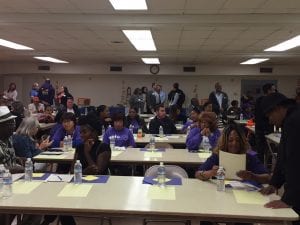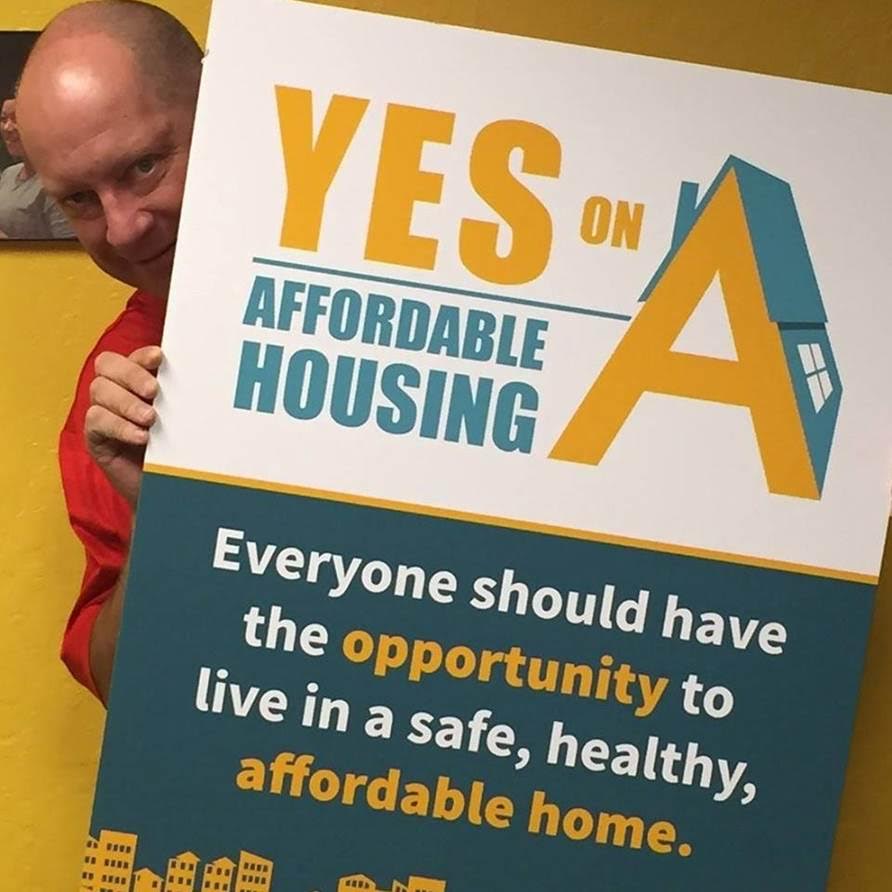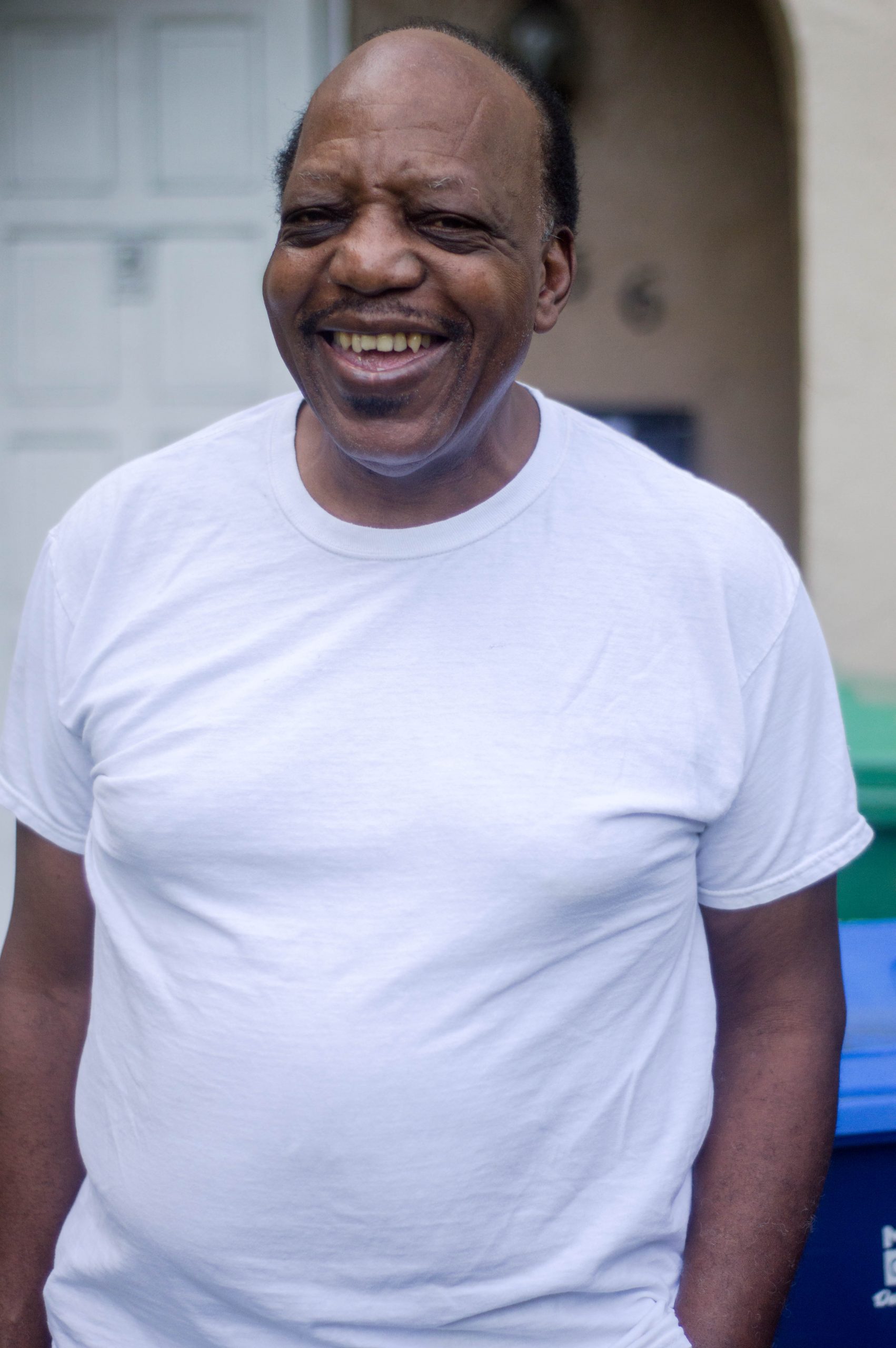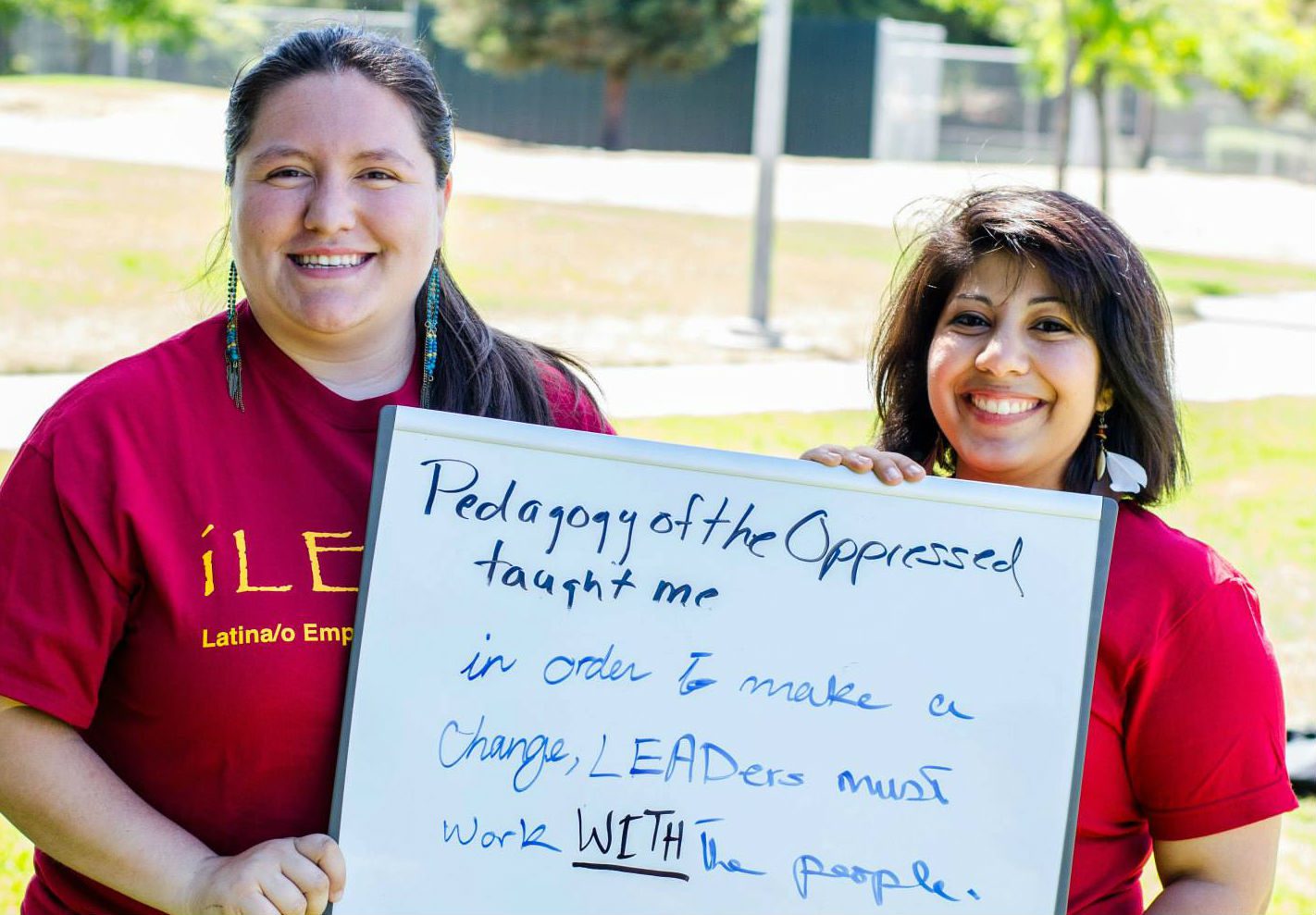
Chris Wilder, Valley Medical Center Foundation CEO, a strong player in the Santa Clara County Measure A campaign coalition. Photo courtesy the Non-Profit Housing Association
Like so many areas around the country, California’s Bay Area counties have faced deep cuts to affordable housing investments from both federal and state sources in recent years. Since 2008, our counties’ affordable housing budgets declined by more than two-thirds, and even up to 87 percent in places like Sonoma County. At the same time, research continues to show just how critical safe, affordable housing is for our communities’ overall health.
It makes sense: If you have an affordable home, you have more money left over to spend on nutritious food, health care, child care, and other vital needs. Furthermore, stable, affordable homes have shown to help improve recovery from substance abuse and chronic diseases, and reduce the number of children exposed to environmental health hazards like lead paint. Many of us who work in the field intuitively know this.
Every day we see that affordable housing is more than just a roof overhead. It’s a home. It’s security. It’s stability. It is the foundation for healthy families, thriving neighborhoods, and opportunity. Members of the Non-Profit Housing Association of Northern California (NPH), where I work as communications director, have been broadening connections and collaborations with health partners for a number of years. We do this work because we need to find holistic solutions for our vulnerable populations, our neighbors, and our communities. But we’re also advocates and organizers, and we see more and more how these health partnerships and connections are also building on an important part of the conversation, persuasion, and case for action.
Last November, NPH helped launch and support three affordable housing funding campaigns in the Bay Area. In each of these campaigns, health considerations were critical components to moving the policy concepts forward and providing important lessons for the work ahead.
What Did We Learn?
Through conversations with county supervisors from each of the successful affordable housing campaigns, we were able to review how health played a role in each campaign.

Home care workers gather for the launch of Measure A1 in Alameda County to help spread the news about the importance of affordable housing for improved health and dignity. Photo courtesy of the Non-Profit Housing Association
- First, health has never been a more important part of the conversation. From the national policy debate to how our county agencies are approaching growing health needs, the conversation is changing. We need to show that we have both economical and moral reasons to move housing as part of our health and community strategies and to strive for innovative funding solutions.
- Second, we saw how important it was to have vocal, engaged health champions on the campaign. Campaigns don’t need cheerleaders—they need organizations who can step up to the table, bring in volunteers, funding, and speak to their experiences and knowledge of health and housing.
- And now, as we begin work on each measure’s implementation process, we recognize how important it is to keep data and measure outcomes on the work we are doing. Housing as health care saves dollars at the end of the day that can, and should, be reinvested in additional preventative work.
In June, NPH spoke with county supervisors Wilma Chan of Alameda County, Don Horsley of San Mateo County, and Cindy Chavez of Santa Clara County about the passage of their respective counties’ affordable housing revenue measures to explore how health considerations were part of the initiatives.
The passage of Measure A1 in Alameda County allows the county to borrow $580 million for affordable housing funding. The approval of Measure K in San Mateo County allows a countywide 0.5 cent sales tax to continue funding county services, and the passage of Measure A in Santa Clara County will allow the county to borrow $950 million to acquire or improve affordable properties.
(Editor’s Note: These conversations have been edited for content and length.)
NPH: There’s long been an understanding that supportive housing with services is an important, direct form of health care. But there’s been a shift in the conversation about how housing impacts health outcomes. What do those conversations look like in your own counties and health agencies, especially leading into your respective affordable housing ballot measures?

Wilma Chan, the county supervisor of Alameda County.
Chan (Measure A1): Alameda County’s Board of Supervisors believes strongly in the social determinants of health—that includes housing, employment, education, and food security. We know that one’s zip code can have a profound impact on the average lifespan, such that residents of some low-income neighborhoods in Alameda County can live on average 14 years less than those in affluent communities. As a result, our housing and health departments have worked closely together for a number of years. This collaboration certainly informed the development of Measure A1, especially as it related to a strategy to end homelessness.

Don Horsley, president of the San Mateo County Board of Supervisors.
Horsley (Measure K): One of the top financial responsibilities at San Mateo County is our health department and the medical center. Taking care of our residents at all levels is a primary concern that we take seriously. The connection between affordable housing and health issues does create a close-knit bond. Even something as basic as inspections can have an impact. For example, we recently enacted stricter code violation policies that will hold landlords responsible for unsuitable living conditions in rental housing they control.

Cindy Chavez of Santa Clara County.
Chavez (Measure A): It was a shift, and it’s one that occurred over a multi-year period. Work from our homelessness advocates, and later a task force co-chaired by business and labor leaders, helped county [officials] see that housing needed to be part of our health and homeless solutions by demonstrating not just a moral reason to engage, but an economic reason as well. Hearing that you’re spending wrong (and seeing the data behind it) helped spur us to say, “OK, let’s find out what’s the right way.” To support health, we knew we had to get in the housing game. How can someone recover from an illness, or get clean and sober, while living on the streets?
How else did health factor into the board’s decision to move forward with an affordable housing bond?
Chavez: Santa Clara County, like so many counties, had been getting people healthy enough to send back on the streets—whether that was people coming to us through hospitals, in jails, or some other capacity. But with Measure A, we could look at funds for certain populations who were more likely to become victimized, become homeless, and then show up in another costly system somewhere in our county—our victims of domestic violence, foster youth, veterans, [and] residents suffering serious illnesses. We had to make sure we could create stable housing options for these groups in order to truly combat the problems. The only reason we hadn’t moved forward earlier is that it’s so expensive. Everyone was waiting for someone else to step forward. But the reality we were learning is that it was far more expensive to do nothing. [A night in our county jail costs] $190; that’s about the same amount to spend the night in some of our finest hotels.
Chan: We had experience with a previous health initiative in Alameda County [the Essential Health Care Services Initiative] and it informed our planning for our affordable housing measure, Measure A1, in two important ways. First, we wanted to ensure that the ballot language was developed in the same transparent manner. Second, we knew that our approach needed to model the successful county-wide strategies. In a county of 1.6 million residents living in urban, suburban, and rural areas, garnering two-thirds of the vote is a significant challenge. And the intersection of the measures was very clear to the Board of Supervisors; in fact, it was the health committee, tasked by the board president, [who] created a subcommittee on housing to spearhead the affordable housing bond process for 2016.
Horsley: Housing is an overall quality of life issue. That means health concerns are integral to people having a safe, affordable place to live. With the high cost of living in San Mateo County, the board knew it was important that we do whatever we can to assist with the creation of affordable housing, and decided to allocate Measure K funds to various affordable housing projects and initiatives, especially HEART (Housing Endowment and Regional Trust), and the Home For All effort.
NPH met doctors and nurses who were coming out to support the campaign because they saw firsthand what kind of health consequences were at play when a person didn’t have housing. But it wasn’t just individuals. Many health and medical organizations officially endorsed the campaigns and played active roles in the coalitions. How did health organizations come to the table in your county?
Chan: We had a broad coalition that came out to support Measure A1 and health organizations were willing to get involved in several ways, including as donors, volunteers, and endorsers of the campaign.
Horsley: Health organizations, from senior citizen nonprofits to hospitals with “wellness” outreach policies, want to help because of the obvious connection affordable housing has to the health of the people they represent or serve.
Chavez: Everyone who works in an emergency room knows that if you don’t house people, they’re going to come back. It really was about us being able to show how a measure could help take this concept to scale. Also, getting early, big participation from two large health foundations (the VMC Foundation and Health Trust) helped tell the story to bring even more health partners to the table.
As you and the board finalize the measure’s implementation, how are health outcomes and goals from housing staying part of the conversation?
Chavez: A big part of our conversation right now is trying to see if shifting circumstances will shift budget. We’re looking at where and how housing can decrease costs to our hospital system and our jail system. We want to test if more housing from Measure A’s funds will lead to fewer visits and then, long term, does that free up hospital and jail funds for more prevention?
Chan: Alameda County’s Healthcare for the Homeless team remains active in the housing discussions. So are those organizations that are focused on anti-displacement work. In both situations, we’re looking at the need to get people housed right now. In addition to the affordable housing bond, we have two major efforts in the county that connect health and housing. First, the Healthy Homes Department works toward providing everyone with a safe and healthy living environment. Second, the Alameda County Whole Person Care program connects high users of emergency services with medical, behavioral health, and substance abuse treatment along with access to housing.
Horsley: Our Board of Supervisors keeps a strong connection to local health organizations and we continue to interact with them and our own employees about the importance of housing to health. The county sponsors low-interest down payments to help homebuyers who are employees as well as the various broader projects available to residents. There is no doubt that people who are able to live and work within their own communities represent a healthier lifestyle.
The stress of the affordable housing crisis has clearly had a negative impact on a great many people in the area. While we cannot solve it, we are leading the charge with the help and support of the public to address the affordable housing issue.
We hear that many of our fellow affordable housing advocacy organizations in other regions are facing what’s viewed as competing budget priorities. They’re combatting this idea that if you invest in housing, you have to take those dollars from somewhere else. Do you have any guidance for health and housing organizations that may be trying to determine how to broach this united approach with their local officials?
Chan: Housing is health. It’s that simple. We are firm believers in the social determinants of health and we keep that front and center in our decision-making process.
Horsley: It’s impossible to budget a large amount of money for affordable housing if you don’t have the money at all. Housing is an expensive factor, which is why affordable housing is a critical problem to solve. You can’t do that without spending money, and innovative financing is the first step. Without the success of Measure K, San Mateo County could not be budgeting upwards of $100 million for housing in the first four years of the sales tax. We have been honored with the voters’ trust and we know they want us to do whatever we can to assist in solving the affordable housing crisis and work to maintain and improve the quality of life here.
Chavez: Local governments who feel compelled to respond to homelessness will never be able to put enough money in unless they address the problem in a new way. Figure out the economics and show them the math. If you’re looking for data, start with what kind of federal funds your region already receives. Santa Clara County receives federal HRSA funds for our Valley Healthcare Home Care project, a preventative program that helps us reduce emergency room needs by our homeless populations.
Having this program in place not only helped us understand the health needs of our residents facing chronic homelessness, it gave us critical baseline data for us to see just how much money we were spending, and could save, by shifting where we invested county dollars.
—
Lessons learned in Bay Area campaigns are critical in how we approach our work ahead. As more areas begin to look to the ballot to engage local governments in restoring or expanding affordable housing in their own communities, we encourage our movement to embrace how the intersection of health and housing moves our mission, and how we can turn research into an argument for action.






Comments